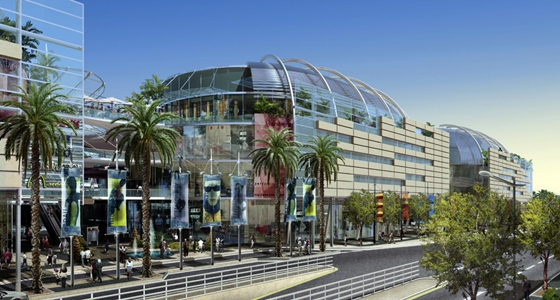A raft of new retail outlets and mall expansions are boosting supply in Jordan’s retail sector – all part of a significant pipeline of projects seeking to capitalize on the country’s rising spending power and growing population.
The new openings should create further opportunities for investors in a market where the range of shopping options is broadening, driven by growing popularity of mixed-use developments and in-hotel retail space.
A broader offering
In late February, Jordan’s Al Adnani Group signed an agreement with Kuwaiti property developer United Real Estate Company to build a 929-sq-metre health spa at the $300m Abdali Mall in Amman. Dubbed Gaia’s Cocoon and billed as “seven-star”, the women-only spa will offer health and beauty products, alongside therapy services ranging from massage and facials to body toning and weight loss.
Its completion could draw more people to the 227,000-sq-metre mall, which opened late last year and houses a supermarket, entertainment center, food court, café and a range of mostly mid-tier stores. International brands with outlets among the mall’s 55,000 sq metres of gross leasable area include Tati, Matalan, Zara, Bershka, Massimo Dutti, Pull&Bear, Oysho, Jules, Calzedonia, Punt Roma and PAUL.
The shopping center is part of the $5bn Abdali development, Amman’s biggest mixed-use project at 2m sq meters of total built-up area, which when completed will include medical and entertainment facilities, alongside residential apartments. About one-fifth of the development –406,000 sq meters – will be devoted to retail.
A further boost could come from the retail components of hotel developments. In October Abu Dhabi-based developer Eagle Hills said it expected its $200m W Amman hotel to be completed by mid-2017. The project will include 41 luxury units called the Skyline Residences on the top seven of its 37 floors, while also featuring office space and shopping outlets.
These and other projects reflect steady expansion in Jordan’s retail sector, where available space grew by 7% in 2016 to 158,000 sq meters, according to property consultancy AT Kearney. Retail sales rose 2.5% that year to $14bn, having seen a compound annual growth rate (CAGR) of 4% over the previous three years.
Key factors for consumer spending
A trend of increased lending to businesses and consumers also bodes well for the retail industry at large.
Last year credit extended to the private sector rose 9.7% to reach JD21.2bn ($29.8bn), according to the Central Bank of Jordan (CBJ), well above the CAGR of 5.8% for the 2012-16 period. Further expansion this year looks likely, with bank loans standing at JD21.6bn ($30.4bn) in February, up 10% on the same month a year earlier.
Despite increased spending, however, high operational costs faced by Jordan’s retail sector have proved a barrier for some industry players.
Early last year two major firms representing eight international clothing brands said they were considering either restructuring or pulling out of the Jordanian market altogether, citing an 8% sales tax and 2% income tax, Sultan Allan, president of the local Garment Traders Association, told media early last year.
The chairman of the Amman Chamber of Commerce, Issa Murad, told local media around the same time that several brands had relocated from the capital to other governorates in pursuit of lower rents.
The government had earlier moved to stem an exodus and encourage consumer spending by slashing the sales tax from 16% to 8% and cutting Customs fees from 30% to 5% on many luxury items, including clothes, bags, watches, shoes, perfume, jewelry, toys and cosmetics.
Still, other factors that weigh on competitiveness, such as the fact that property tax is levied based on a retail site’s total area rather than on gross leasable area, remain unaddressed.
Room for growth
Despite these challenges, Jordan has improved its ranking on international indices, placing 13th out of 30 emerging markets in AT Kearney’s “2016 Global Retail Development Index”, up 12 places on the previous year. This put it ahead of Morocco (14th) and Egypt (30th), but behind Saudi Arabia (8th) and the UAE (7th).
The ranking was due to Jordan being the least-saturated Middle East market on its index, the consultancy said. This, combined with rapid population growth, “offers an attractive medium-term value proposition for potential entrants”, though it also noted that regional instability could weigh on this.
Oxford Business Group
24 May

























































